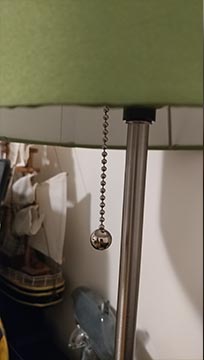AFFORDANCES
Affordances describe the relationship between a person and an object. The properties of the object and the abilities of the person or agent acting on the object determine whether the object affords or “is for” a purpose (Norman). This means that the object has a property, the person can perceive this property, and the person has the ability to take an action as a result of perceiving it. Affordances help us understand how to use an object before we begin to interact with it.
It is important to consider the entire equation when examining affordances. If the person, or “agent” as Norman puts it, does not have the ability to act, then the object does not afford that purpose. Stairs afford climbing up and down for those who are agile and can walk. However, stairs do not afford climbing for individuals in wheelchairs or who do not have the strength or ability to climb. In this example, the relationship between the properties of the stairs and the capabilities of the individual determined whether the stairs afford (are for) climbing. Conversely, if the stairs did not actually have the property of steps, they also would not afford climbing (Norman).
Choosing to look at affordances as a relationship may help in a better understanding of the principle. This idea is presented in Don Norman’s Design of Everyday Things. Universal Principles of Design describes the principle as objects being able to afford better or worse than others or to even negatively afford some action (Lidwell). Understanding affordances as a property in this context may add confusion to the overarching idea behind their use and purpose, which is why Norman’s definition was used as a source for this exercise (Norman).
Example of the principle cited by original sources
The door on the left has a handle that appears to afford pulling, even though a sign indicates otherwise. This affordance breaks the design because it falsely suggests how to use the door. The handle affords grasping and pulling; however, the door does not have the physical property of swinging out that direction. The flat plate on the second door, to the right, is an affordance that affords pushing. A property of the door to be pushed open matches, thus this door would allow us to understand how to use it with ease.

Example of the principle not cited by original sources and located online
An affordance of these scissors are the holes in the handle. These holes afford inserting something into them such as your fingers. This affordance helps us understand how to use the product with out actually picking it up. Physical constraints and natural mappings make this an excellent design (Scissors).

Example of the principle not cited by original sources and not located online
The ball and chain on this lamp are affordances that allow us to understand how to use the lamp, even if this is our first interaction. The metal ball is easily grasped and the pair affords pulling.

References:
Lidwell, William, et al. Universal Principles of Design. 2010. Accessed 2018.
Norman, D.A. (1988) The Design of Everyday Things. New York: Basic Books
Scissors. 2017, medium.com/@eggsasperated/scissors-42698f16bf6c. Accessed 14 Oct. 2018.

This wordpress site has many affordances we can glean from. Spaces where we can type something are outlined in a 1 px #bbb outline. When you start typing, the border becomes black. The buttons on this page are black with white font to differentiate them from dropdowns. The arrows in previous/next links show what direction the link goes to.